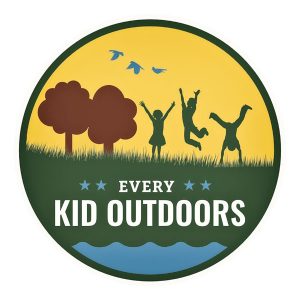National Parks pass for fourth graders

In 2015, President Barack Obama announced the Every Kid in a Park (EKP) program which provides all fourth-grade students with a free National Park pass for one year. The program was launched to coincide with the 100th anniversary of the National Park Service (NPS).
All fourth-grade students are eligible for the free pass beginning September 1 of the year they begin fourth grade and expires August 31 of the following year. Students complete a short survey on the EKP website and print the barcode when finished. Electronic copies of the unique code are not accepted. Show the printout to a ranger at the specified national park visitor’s center to receive a year-long parks pass card. Students sign the card and need to be present when entering a park with the pass.
“We chose fourth grade because research shows that kids ages nine to 11 are beginning to learn about the world around them. They’re open to new ideas and they are likely to connect to nature and our history,” according to EKP’s website.
Also, many schools around the country teach local and state history in fourth grade, so connecting students with nationally protected lands managed by the federal government can tie into existing school curriculum.
Another goal of EKP is to get more kids and their families outside to explore our national treasures. Over time, more and more students and families will have free access to the great outdoors and specifically to national parks.
The program is funded through the NPS budget earmarked for youth engagement programs. In 2015, the annual budget for youth programs was $20 million; the estimated revenue loss for free passes was about 10 percent.
A yearlong NPS pass for everyone else costs around $80 per car, the same as it
cost in 2015.
In addition to the free parks pass, the National Park Foundation and NPS have partnered together to help facilitate educational materials and transportation grants to schools focusing on areas where the economic need is greatest. These supplementary programs are meant to help introduce hands-on outdoor experiences to children who may not have the opportunity to go with their families.
For more information, visit everykidoutdoors.gov.